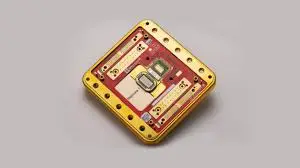Quantum computing has long been considered the future of technology, but real-world applications have remained just out of reach. That is, until now. Microsoft has unveiled Majorana 1, a groundbreaking quantum processing unit (QPU) that could change the way we solve complex problems.
So, what is Majorana 1, how does it work, and why should you care? Let’s break it down.
What Is Microsoft Majorana 1?
Microsoft Majorana 1 is a next-generation quantum chip designed using a revolutionary Topological Core architecture. Unlike traditional quantum processors, which struggle with errors and stability issues, Majorana 1 leverages topological qubits, making it more reliable and scalable.
The chip is named after Majorana particles, exotic quantum states that help create stable qubits. These particles hold the key to building a quantum computer that can function at scale, solving problems far beyond the reach of today’s classical computers.
How Majorana 1 Works
At the core of Majorana 1 is a new class of materials known as topoconductors. These materials enable topological superconductivity, a special state of matter that protects qubits from external disturbances. This is crucial because one of the biggest challenges in quantum computing is error correction—keeping qubits stable enough to perform calculations.
Key Innovations in Majorana 1:
- Topological Qubits: These qubits are inherently more stable, reducing the need for constant error correction.
- Digital Control System: Microsoft uses a measurement-based approach to control qubits, allowing for more efficient scaling.
- Compact and Scalable Design: The goal is to build a million-qubit quantum computer on a single chip, a major leap from today’s experimental quantum devices.
Why Majorana 1 Matters to You
While quantum computing might seem like something only scientists and tech giants care about, the reality is this technology could soon impact everyday life in powerful ways. Here’s how:
1. Solving Climate Problems
Quantum computers powered by Majorana 1 could help design new catalysts to break down pollutants, like microplastics, or create energy-efficient materials that fight climate change.
2. Revolutionizing Healthcare
From faster drug discovery to personalized medicine, quantum computing could accelerate medical breakthroughs, leading to better treatments and cures for diseases.
3. Transforming Industries
Imagine self-healing materials in construction, hyper-efficient batteries, or new AI models that can solve previously unsolvable problems. Quantum computing could make this a reality.
When Can We Expect Quantum Computing to Go Mainstream?
Microsoft is optimistic that utility-scale quantum computing is within reach in the coming years—not decades. The development of Majorana 1 brings us one step closer to achieving that vision.
Final Thoughts
Microsoft Majorana 1 is not just another incremental step in quantum computing—it’s a potential breakthrough that could finally make quantum computing practical and accessible. As research progresses, we may soon see real-world applications that impact everything from healthcare to climate solutions.
The quantum revolution is closer than ever, and with Majorana 1, Microsoft is leading the charge.




